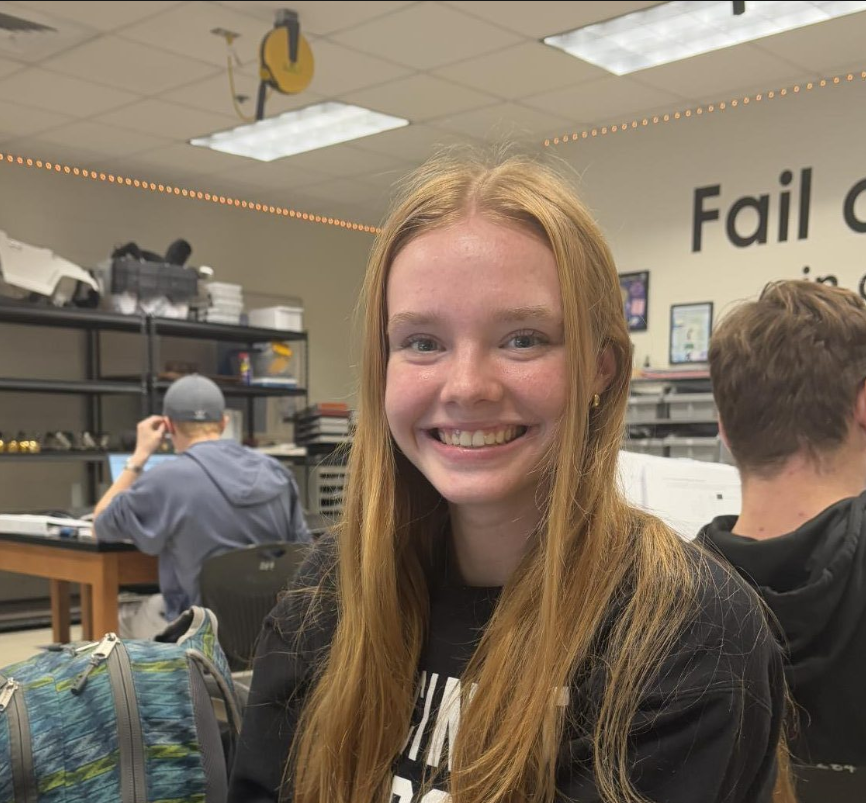By Sarah Aftab
Walking into the Women in Information Technology conference at Xavier University on November 13th along with 21 of my female computer science classmates, I wasn’t expecting much more than a school field trip with a couple monotonous speeches about phones and laptops to end the week. It came as a shock, however, when most of the topics touched on by the various speakers involved many of the things young women of my age value.
University of Cincinnati (UC) Sophomore Tessa Weidman kicked off the discussion with an account of her own experiences growing up with technology.
“Eventually I had to ask myself, how could I turn this passion for technology into something that I can do for the rest of my life?” said Weidman.
According to Pew Research Center, as of January, 2014, 98% of American adults ages 18-29 own a cellphone. Likewise, UC IT Analyst Chris Collins discussed the huge role technology plays in the working world and our everyday lives in the present day.
“There is no job that you are gonna have that isn’t gonna require you to have some basic understanding of technology,” said Collins. “Technology is not just science. It’s not just math. It’s also art. It’s design. It’s creativity. It’s innovation. It’s thinking outside the box.”
Western & Southern Financial Group Cyber Security Operations Center Manager Emily Morgan built on the power of electronics by providing comparisons to devices in the past.
“These little computers that you’ve got in your pockets, did you know that those have more computing power than the space program in the 1960s, rockets that went to the moon?” said Morgan. “You have more computing power in your pocket than they did to run that entire system.”
While explaining the various ways in which technology has an impact on our lives, each speaker took time to address how important it is for women to consider looking into STEM fields. Dean of the UC College of Arts and Science Janice Walker explored her own challenges of growing up with an interest in technology in a small town.
“I’m filled with hope, too,” said Walker, “when I think of an African American girl who grew up in my home town in northern Florida, a town of about 3500 people. She attended really poorly resourced schools, her confidence and self-esteem were very low, and believe me, no one in her small hometown would’ve ever dreamed she would grow up to study mathematics in a top graduate program and complete a PhD. But with encouragement and mentoring she kept pushing forward and she did it. So I know it’s possible for many other girls to succeed despite the odds against them. By the way, that girl was me.”
According to the National Center for Women in Information Technology (NCWIT), girls make up 56% of all Advanced Placement (AP) test-takers. Only 19% of all AP CS test-takers, however, are female. Weidman commented on the lack of women at her first technology convention.
“I was sitting right where you guys are, and I was thinking to myself, ‘Who knew there were so many cool women in technology and cool things you can do with it?’” said Weidman.
Once the speeches were finished and lunch was served, each table was given a challenge to complete and present to three judges. The premise was an unpopular school spirit shop in need of reform in regards to outdated products and an inefficient checkout system. With a budget of $10,000, each team set out to provide the most money-saving solution for a chance to win gift cards to Target. Our team found that the challenge ended up mainly requiring the ability to manage a budget rather than to implement technology.
Set up along the side of the hall was a 3D printer display by GE Aviation, demonstrating the process of building a stretchy bracelet with the printing technology. The value of the global market for 3D printers rests at $2.2 billion, according to an article by The Economist, and 3D printer shipments are expected to grow 95% through 2017, according to analysts at Gartner.
GE Support Services Manager Miles Vaught discussed the use of such printers in his own experiences with the building of airplanes.
“As part of that manufacturing process, we now use 3D printing to actually manufacture jet engine parts that are inside the engine that is running at temperatures somewhere around 2000 to 3000 degrees,” said Vaught. “It’s hard to believe that in the old days it was either cast metals that make parts or machining, but now it’s all been replaced with this 3D printing process.”
On the other side of the hall resided the UC Center for Simulations and Virtual Environments Research (UCSIM) Oculus Rift display, where students were able to try on the Oculus Rift and experience a variety of simulations firsthand. Collins explained the use of virtual simulation technology in the Point of Care Center for Emerging Neuro Technologies (POC-CENT), a virtual space built for aspiring doctors to practice risky procedures.
“[POC-CENT] was a grant to create basically a virtual hospital where people could get training,” said Collins, “so students who are fourth-year medical students took their residency training in a virtual environment, and our team created that space.”
As the event ended, most students were left with a new perspective on STEM disciplines and on their own ability to get involved in the typically male-dominated fields.
“I was thinking [of going into] law or medicine,” said Freshman Kaitlyn Havlin, who attended the event with her school, “but I’m thinking about technology now, so I wanna get some more information.”
Fellow Freshman Isabel Lynch chimed in with what she had gathered from the speeches presented to her over the course of the event.






































































































